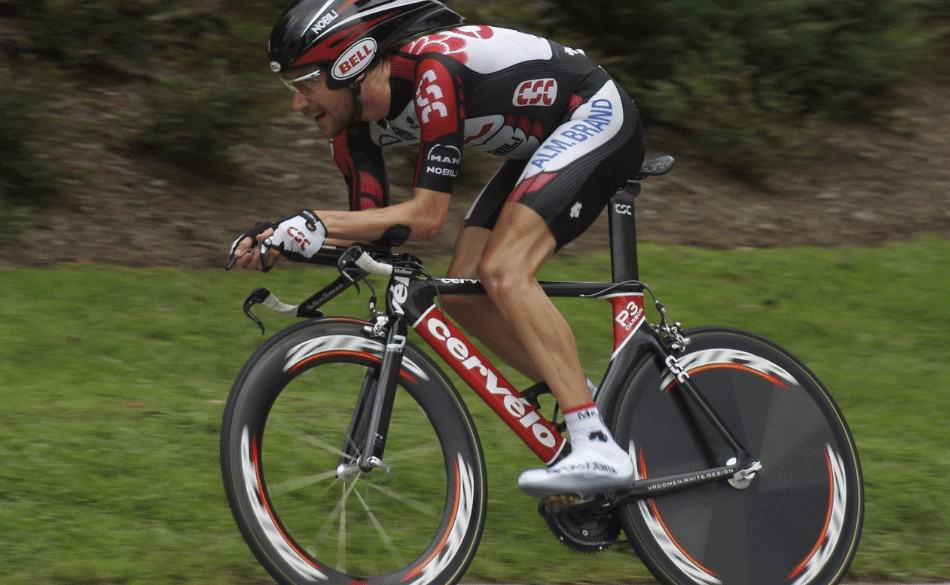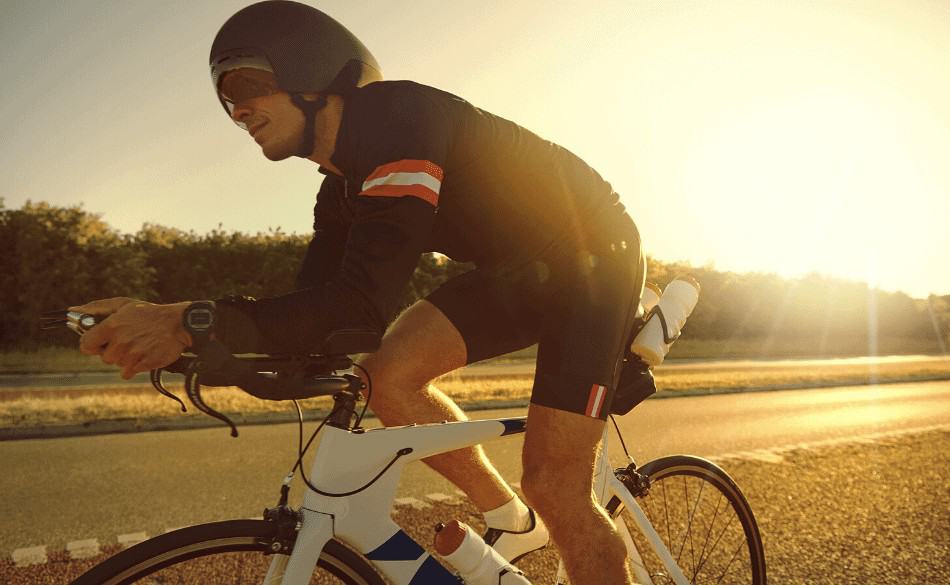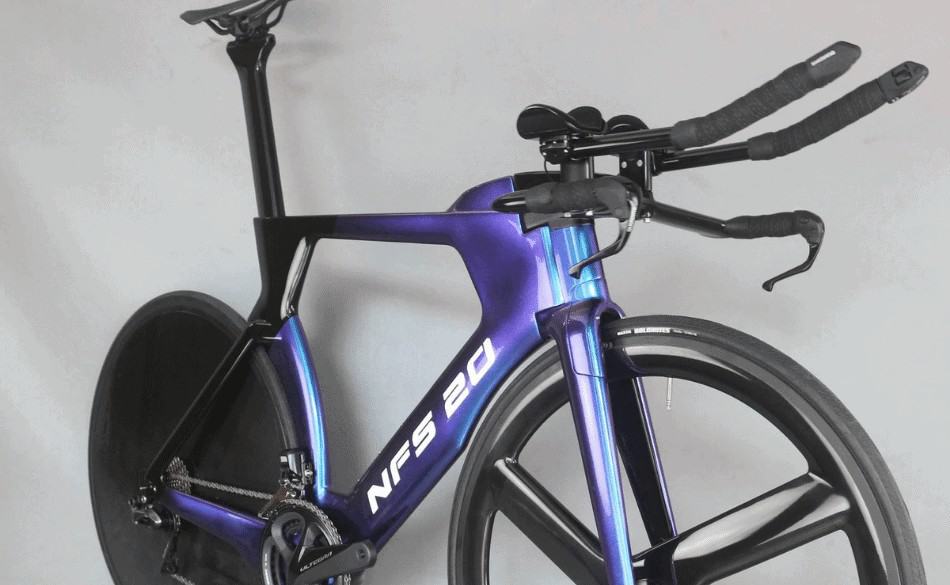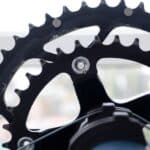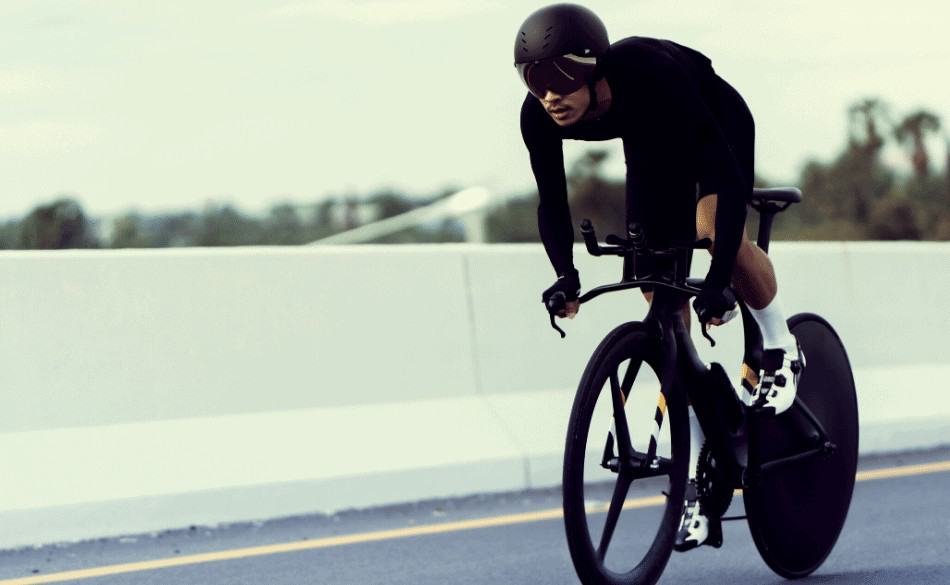
Road Bike Vs TT Bike For Triathlons – UPDATED 2020 – How They Differ?
Page Contents
Road Bike Vs TT Bike For Triathlons – How They Differ?
You may be new to triathlon or don’t have the budget, meaning you may be looking at the pitfalls of a road bike vs TT bike for triathlon.
Before going into the debate of a road bike vs TT bike for triathlon you need to weigh up the benefits of both. Your riding ability and bike setup paired with goals, training and fitness place a large part in this.
These factors often help determine if you should make the move to a different model of bike. Newcomers to the sport or time-constrained people would benefit from sticking to a road bike.
There are many differences between a road bike and TT bike, but the main visual difference comes in the design of the frame. TT bikes are built to cheat the wind and a designed around a streamlined shape, thus most tubes being constructed in a flat of oval shape helping to reduce the frontal area. Often slightly heavier, TT bikes are primarily designed to go fast on the flat, while road bikes are built around handling various terrains and speeds. This can be seen through the weight difference and also the geometry of both models of bikes.
Road bikes have a much more relaxed seat angle, to help with comfort climbing and often have a much higher head tube angle. Think of a road bike as trying to rotate your body slightly back, while the TT bike is trying to rotate you forward into a more aerodynamic position.
Because of this more forward position on a TT bike you will find that the handling somewhat differs from a road bike. The head tube is usually steeper this giving a slightly stiffer and more responsive feel. If you pair this with a shorter wheelbase than the traditional road bike, the TT bike will feel somewhat twitchier than its counterpart.
So if you bike handling skills aren’t up to par or you are a newbie to the sport, stick to a road bike with clip-on bars until you feel more confident.
Why Are Time Trial Bikes Different?
There of questions related to time trial bikes and why are time trial bikes a different from a triathlon bike. Although at first glance, you may find it difficult to spot the difference. There are numerous things that set them apart, geometry, fitting, and of course the build.
While the geometry alone isn’t at straight forward as you think, many bike manufacturers use the same geometry on both triathlon and time trial bikes. But this can, through fitting be largely adjusted to the same angles. The bikes that do offer a difference in geometry often relate to the seat tube being slightly more aggressive, allowing you to get more forward over the bottom bracket. While with the Time Trial bikes you need to sit within the UCI rules.
Then you have one of the largest factors of why time trial bikes a different from a triathlon bike, and that is the 3:1 rule. This means that Time Trial bikes generally fall within the rules of not being three times longer than it is wide on any part of the bike. Although these rules have been slightly adjusted a few times since 2017, there are still some rules that the bikes must adhere to. Although you will find this will become less and less over the coming years.
Another thing to note is that TT bikes is generally ridden over shorter distances and requires less storage and hydration for the rider. Aerodynamics and speed is the primary goal here and anything that can affect this or doesn’t fit the 3:1 rules is removed.
Time Trial Bike Vs Triathlon Bikes
You may be reading this and still confused about the differences of a time trial bike vs triathlon bikes. While there are benefits to both if your primary sport is triathlon, then it is better to stick to a triathlon bike.
Why you might ask? This is because of the storage and often more aerodynamic shape. Hydration and storage are important in those longer events such as Ironman. You need to carry spare tubes or c02 and also have enough fluid and food on board if you miss an add station. While these hydration and storage areas can be added to a TT bike, they are already often built around the aerodynamics of a triathlon bike, often making them faster. Since they don’t need to adhere to the 3:1 rule triathlon bikes aren’t limited to the development of frame designs. You can see this buy bikes such as the Cervelo P5X and the Diamondback Andean. Both bikes are designed to be as fast as possible and offer plenty of hydration and storage facilities but fall out of the UCI rules.
So if your main goal is triathlon, stick to a triathlon bike for the immediate future.
How Much Faster Is A TT Bike Vs Road Bike?
Often the question arises of how much faster is a TT bike vs a Road bike. Is it really that much faster?
The answer is a definite yes. Although there is a couple of factors that can play a role in the answer. First of all the bike should be fitted correctly to you and be the right size. Secondly, there are some terrains where a road bike can outperform a Time Trial bike. Long steady climbs or climbs with changing gradients often outperform a TT bike. This is because of the position on the TT bike and also the speed is much lower affecting the benefits of aerodynamics less and less.
If we are talking about flat to rolling terrain or straight out time trial or triathlon events, a Time Trial bike will run around a road bike any day of the week. there have been many tests in the wind tunnel and these tests often show in an Ironman event that a TT or Triathlon bike can be up to 3kph quicker, while this is a general figure you may find this slightly more or less depending on your position, wheel choice and average speed.
While there are many studies into the difference, here is a brief breakdown from one of them over an Ironman course
– Trek alloy road bike with 50mm deep (carbon) wheels: 28kph 6h25min
– Trek Carbon Madone road bike in a road position with 60mm carbon wheels: 30.8kph 5hr51min
– Trek Speed Concept TT bike with 60mm Carbon wheels: 33.1kph 5h17min
So, in general, you can see how much faster is a TT bike vs a road bike is. While this doesn’t go into much detail, it is here to give you a basic detail into the time advantage of a road bike vs a TT bike for a triathlon.
(Reference http://www.wheelworx.ie/)
What Is A TT Bike
So what is a TT bike? A TT bike or actually named a time trial bike is designed for use in time trial events on the road. This is where riders are set off at different times over the same course, where the person with the fastest time over the distance is named the winner. Though often in the past year’s TT bikes have become a general name for aerodynamic bikes used in Time Trials and Triathlons.
While there is a slight difference in both bikes, the similarity is becoming less and less. The bikes are primarily designed for races where drafting is not permitted. This means events such as a half Ironman, Ironman, Time trials, and Duathlons. Thus providing the most aerodynamic frame paired with aero bars for the rider to cheat the wind as much as possible.


